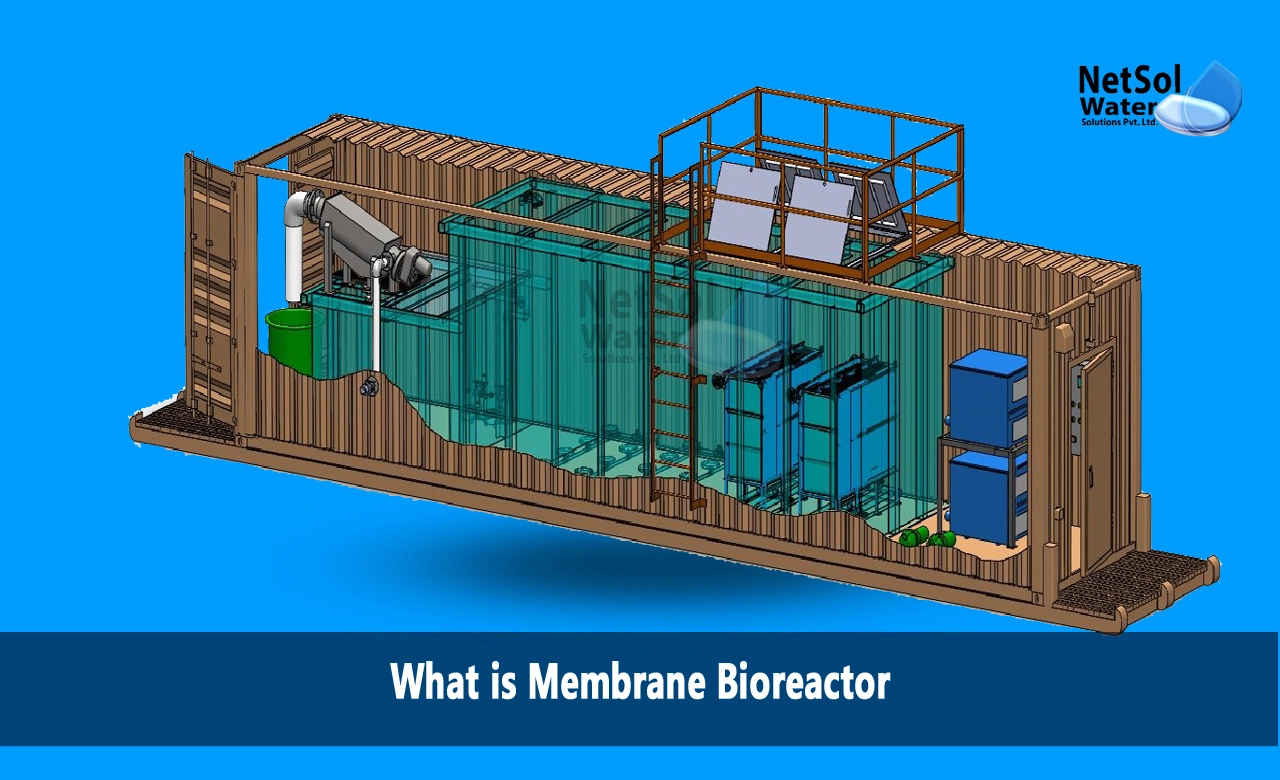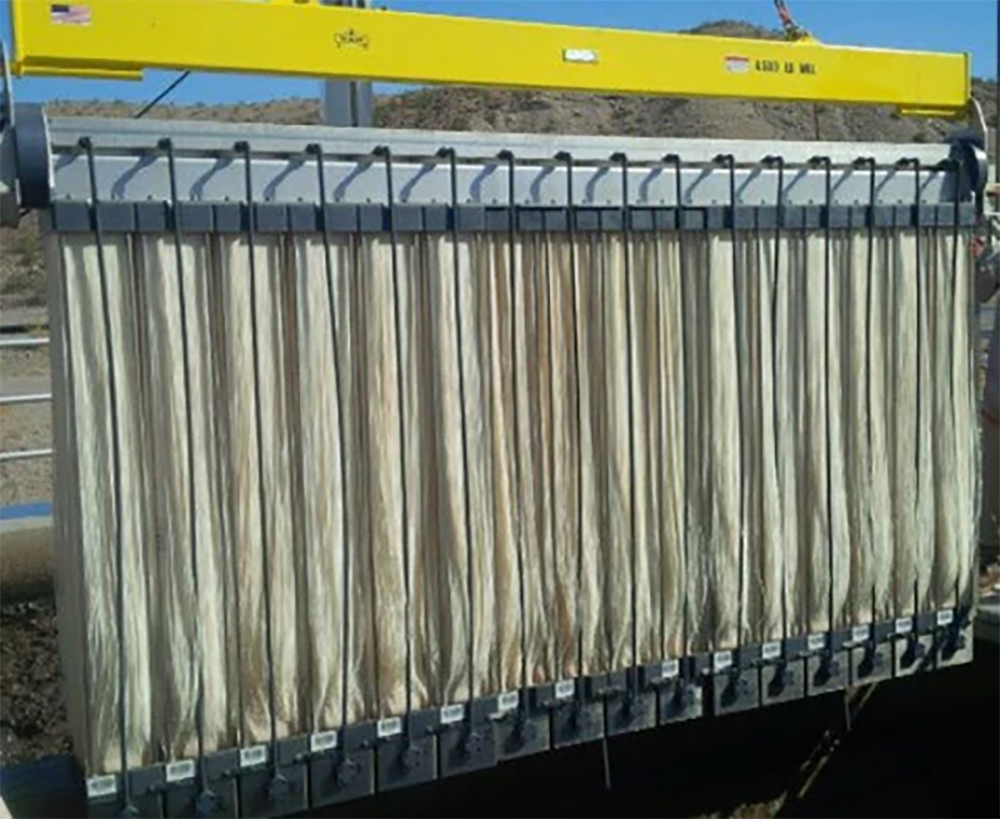Future Trends in Membrane Bioreactor Technology and Its Global Impact
Future Trends in Membrane Bioreactor Technology and Its Global Impact
Blog Article
Comprehending Membrane Bioreactors: The Future of Wastewater Treatment
Membrane layer bioreactors (MBRs) represent a noteworthy technology in the field of wastewater treatment, incorporating biological procedures with advanced membrane filtration to boost effluent quality. As international water shortage and stringent regulatory structures become significantly pushing issues, MBR technology supplies an effective response through its capacity to lessen impact and maximize source healing.
What Are Membrane Layer Bioreactors?

The core parts of MBR systems consist of a bioreactor where microbial activity occurs and a membrane layer system that filterings system the mixed alcohol. This dual performance allows the simultaneous destruction of natural issue and solid-liquid separation in a single step. MBRs can run in both immersed and outside setups, with immersed systems being a lot more typical due to their small style and operational performance.
The adoption of MBR technology has actually obtained grip in numerous applications, varying from metropolitan wastewater treatment to industrial effluent management. MBRs are particularly helpful in situations where area is limited or rigorous effluent top quality standards need to be fulfilled. By maintaining a high focus of bacteria within the bioreactor, MBRs enhance the destruction of organic toxins, thus producing higher therapy effectiveness contrasted to standard approaches.
Trick Advantages of MBR Modern Technology
The assimilation of biological therapy with membrane layer purification in MBR systems provides many advantages that establish it besides typical wastewater treatment approaches. One of the primary advantages is the enhanced effluent quality. MBRs successfully remove put on hold solids and pathogens, achieving greater levels of purification that meet stringent discharge criteria and help with water reuse applications.

An additional significant benefit is the lowered sludge manufacturing. MBR systems generate much less excess sludge, leading to reduced disposal prices and a decrease in environmental impact. The closed nature of the membrane layer system decreases the threat of odor exhausts and enhances total process control.
Last But Not Least, MBRs are flexible and adaptable, making them ideal for numerous wastewater kinds, consisting of commercial and metropolitan resources. The capability to integrate with advanced treatment modern technologies better enhances their efficiency, making MBRs an appealing service for the future of wastewater administration.
Obstacles and Limitations of MBRs
While MBR modern technology supplies numerous benefits, it likewise encounters several obstacles and constraints that can impact its extensive fostering. One substantial obstacle is the high capital and operational costs linked with MBR systems. The initial financial investment for membrane materials and the required framework can be considerable, making it much less available for smaller sized industries or municipalities.
In addition, membrane layer fouling continues to be a crucial problem that can decrease system check this performance and increase upkeep needs. Fouling happens when solids, raw material, or bacteria build up on the membrane layer surface, bring about minimized leaks in the structure and calling for constant cleansing or replacement.
One more constraint entails the complexity of the innovation. MBR systems call for competent employees for operation and upkeep, which can be a barrier in regions with minimal technological knowledge. In addition, the disposal of spent membranes presents environmental worries, as the materials are frequently not biodegradable and can add to squander administration challenges.
Finally, while MBRs can properly deal with a vast array of wastewater, they might not be appropriate for all applications, especially those with high focus of fats, oils, and oils, requiring more research and advancement to attend to these limitations.
Applications of Membrane Bioreactors
In different sectors, membrane bioreactors (MBRs) have actually emerged as a flexible solution for wastewater therapy (Membrane Bioreactor). Their applications span municipal, commercial, and agricultural settings, showcasing their adaptability and efficiency in varied atmospheres. In municipal wastewater therapy plants, MBRs substantially enhance effluent top quality, permitting water reuse and minimizing the ecological impact of released wastewater
Industrially, MBRs are utilized in food and drink processing, textile production, and pharmaceutical production, where they effectively deal with high-strength waste streams. Their capacity to handle rising and fall loads and varying pollutant focus makes them especially valuable in these industries. In addition, MBRs help with the elimination of pathogens, put on hold solids, and natural issue, contributing to compliance with rigorous discharge regulations.
In farming, MBRs are progressively used for treating agricultural runoff and animals wastewater, enabling the recovery of nutrients for fertilizer production. They likewise aid in the therapy of greywater for watering, advertising sustainable water monitoring methods.
The flexibility of MBRs is additional confirmed by their integration with other technologies, such as anaerobic food digestion and advanced oxidation procedures, enhancing total efficiency and source healing in wastewater treatment systems.
The Future of Wastewater Treatment
Improvements in technology and an expanding focus on sustainability are forming the future of wastewater therapy. Membrane bioreactors (MBRs) exhibit this change by incorporating biological therapy procedures with membrane filtration, leading to high-grade effluent ideal for reuse. The pattern towards round economies is triggering facilities to adopt MBRs for their capability to recoup resources, such as water and nutrients, from wastewater.
Developments in membrane layer products and configuration are enhancing the effectiveness and longevity of MBR systems, minimizing operational expenses and power intake. Smart article technology assimilation, including real-time tracking and automated control systems, is more maximizing performance and making it possible for anticipating upkeep, thus decreasing downtime.
Furthermore, regulative stress and societal assumptions are pressing municipalities and sectors to take on more lasting practices. Membrane Bioreactor. The shift towards decentralized wastewater therapy solutions is obtaining grip, enabling for localized therapy that minimizes transportation expenses and go power usage
Conclusion
Membrane bioreactors (MBRs) stand for a transformative technique to wastewater therapy, incorporating organic procedures with innovative membrane innovation. The advantages of MBRs, including boosted effluent high quality, minimized spatial requirements, and lower sludge production, place them as a practical option in the middle of growing urbanization and more stringent environmental guidelines. Regardless of existing obstacles, the ongoing technology in membrane layer products and operational techniques assures to boost the efficacy and adoption of MBRs, ensuring their crucial role in the future of lasting wastewater management.
Membrane layer bioreactors (MBRs) represent a significant technology in the area of wastewater treatment, integrating biological processes with innovative membrane layer filtering to boost effluent quality.Membrane layer bioreactors (MBRs) integrate biological therapy procedures with membrane layer filtering to effectively deal with wastewater.The integration of organic therapy with membrane filtration in MBR systems supplies many benefits that establish it apart from traditional wastewater treatment techniques. Membrane bioreactors (MBRs) exemplify this change by integrating organic therapy procedures with membrane layer filtering, resulting in top quality effluent appropriate for reuse.Membrane bioreactors (MBRs) stand for a transformative strategy to wastewater therapy, incorporating biological processes with innovative membrane innovation.
Report this page